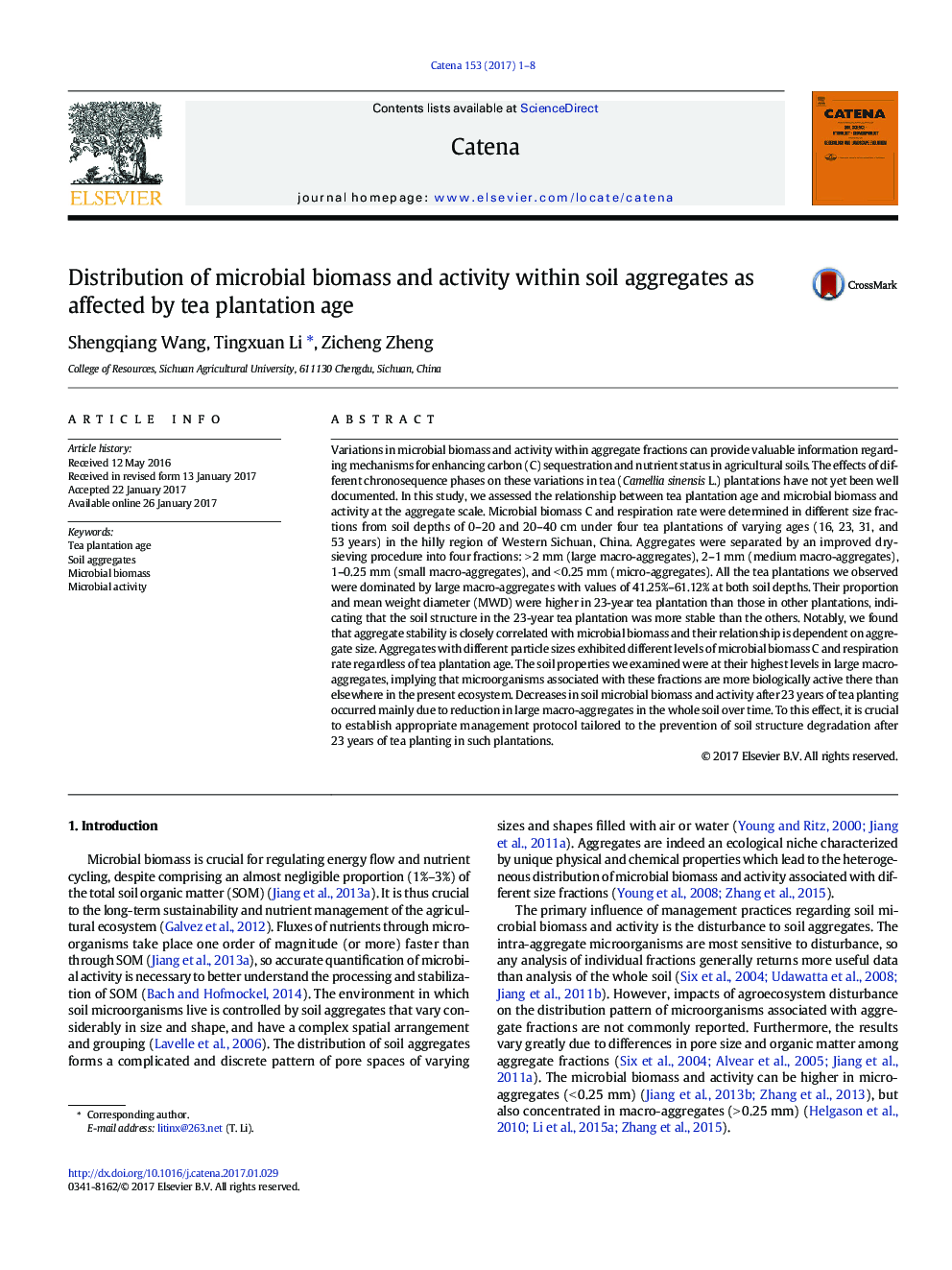| کد مقاله | کد نشریه | سال انتشار | مقاله انگلیسی | نسخه تمام متن |
|---|---|---|---|---|
| 5770143 | 1629201 | 2017 | 8 صفحه PDF | دانلود رایگان |
عنوان انگلیسی مقاله ISI
Distribution of microbial biomass and activity within soil aggregates as affected by tea plantation age
ترجمه فارسی عنوان
توزیع بیوماس میکروبی و فعالیت در خاک های خرد شده تحت تاثیر سن گیاهان چای
دانلود مقاله + سفارش ترجمه
دانلود مقاله ISI انگلیسی
رایگان برای ایرانیان
کلمات کلیدی
سن گیاه چای، سازه های خاک، بیوماس میکروبی، فعالیت میکروبی،
موضوعات مرتبط
مهندسی و علوم پایه
علوم زمین و سیارات
فرآیندهای سطح زمین
چکیده انگلیسی
Variations in microbial biomass and activity within aggregate fractions can provide valuable information regarding mechanisms for enhancing carbon (C) sequestration and nutrient status in agricultural soils. The effects of different chronosequence phases on these variations in tea (Camellia sinensis L.) plantations have not yet been well documented. In this study, we assessed the relationship between tea plantation age and microbial biomass and activity at the aggregate scale. Microbial biomass C and respiration rate were determined in different size fractions from soil depths of 0-20 and 20-40Â cm under four tea plantations of varying ages (16, 23, 31, and 53Â years) in the hilly region of Western Sichuan, China. Aggregates were separated by an improved dry-sieving procedure into four fractions: >Â 2Â mm (large macro-aggregates), 2-1Â mm (medium macro-aggregates), 1-0.25Â mm (small macro-aggregates), and <Â 0.25Â mm (micro-aggregates). All the tea plantations we observed were dominated by large macro-aggregates with values of 41.25%-61.12% at both soil depths. Their proportion and mean weight diameter (MWD) were higher in 23-year tea plantation than those in other plantations, indicating that the soil structure in the 23-year tea plantation was more stable than the others. Notably, we found that aggregate stability is closely correlated with microbial biomass and their relationship is dependent on aggregate size. Aggregates with different particle sizes exhibited different levels of microbial biomass C and respiration rate regardless of tea plantation age. The soil properties we examined were at their highest levels in large macro-aggregates, implying that microorganisms associated with these fractions are more biologically active there than elsewhere in the present ecosystem. Decreases in soil microbial biomass and activity after 23Â years of tea planting occurred mainly due to reduction in large macro-aggregates in the whole soil over time. To this effect, it is crucial to establish appropriate management protocol tailored to the prevention of soil structure degradation after 23Â years of tea planting in such plantations.
ناشر
Database: Elsevier - ScienceDirect (ساینس دایرکت)
Journal: CATENA - Volume 153, June 2017, Pages 1-8
Journal: CATENA - Volume 153, June 2017, Pages 1-8
نویسندگان
Shengqiang Wang, Tingxuan Li, Zicheng Zheng,
